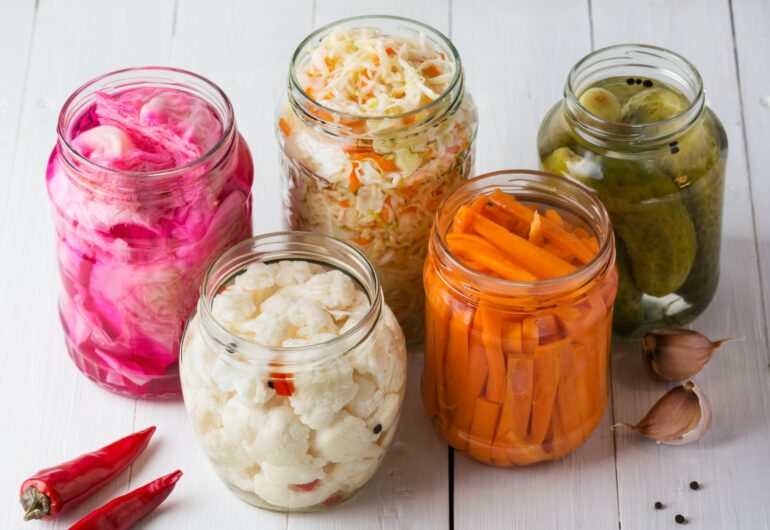Humans have been fermenting food and drinks — everything from kimchi and yogurt to beer and kombucha — for more than 13,000 years.
Fermentation – a natural process that uses microorganisms to create alcohols and acids from carbohydrates – can preserve food so it lasts longer, and it can enhance the quality of a food by turning some components into more easily digestible forms.
Some fermented foods that contain live microorganisms are called probiotics, which can increase the shelf life of food and provide a range of additional benefits, like promoting a healthy gut microbiome and lowering cholesterol levels.
We are chemists, and our team wanted to figure out a way to understand which probiotics are the most active in the body. So we developed a cardboard sensor that could monitor the metabolic activity of probiotics.
Probiotic health benefits
As they are generally considered safe, probiotics are also one of the most popular dietary supplements in today’s market, accounting for more than US$50 billion per year.
Lactobacillus, Bifidobacterium and Saccharomyces are the most common probiotics. For example, food manufacturers use starter cultures of Lactobacillus bulgaricus and Streptococcus thermophilus to clot milk and make yogurt.
Probiotic-packed foods can help with gut health.
Recent studies have also found that probiotics may prevent the development of harmful bacteria in the body, lower cholesterol levels, reduce constipation, control blood pressure, enhance the production of vitamins, improve calcium absorption and boost the immune system.
However, probiotics can only provide health effects when the microorganisms are alive, meaning they’re metabolically active and interacting with the host’s body. So, the type of probiotic, its formulation, and how it’s processed become critically important.
Analyzing probiotics
Probiotics grow from individual cells into colonies. Food scientists can study probiotics by counting the number of viable cells – also called colony forming units – in the food to figure out how much they might grow and how active they’ll be. They can also study how probiotics respond to a gastric juice made in the lab to simulate how probiotics act in your gut. Gastric juice is the fluid secreted in your stomach during digestion.
But most of these tests are slow and involve expensive instruments and skilled personnel. That’s where our cardboard sensors come in.
Our research team has collaborated with a research team from Brazil to develop a simple sensor that can measure the metabolic activity of probiotic foods.
We built the sensors using standard cardboard and a process called laser scribing. We use a laser to convert a small amount of the cardboard into carbon, making it electrically conductive. We also used gold nanoparticles, which further improve the sensor’s response by decreasing the material’s…



